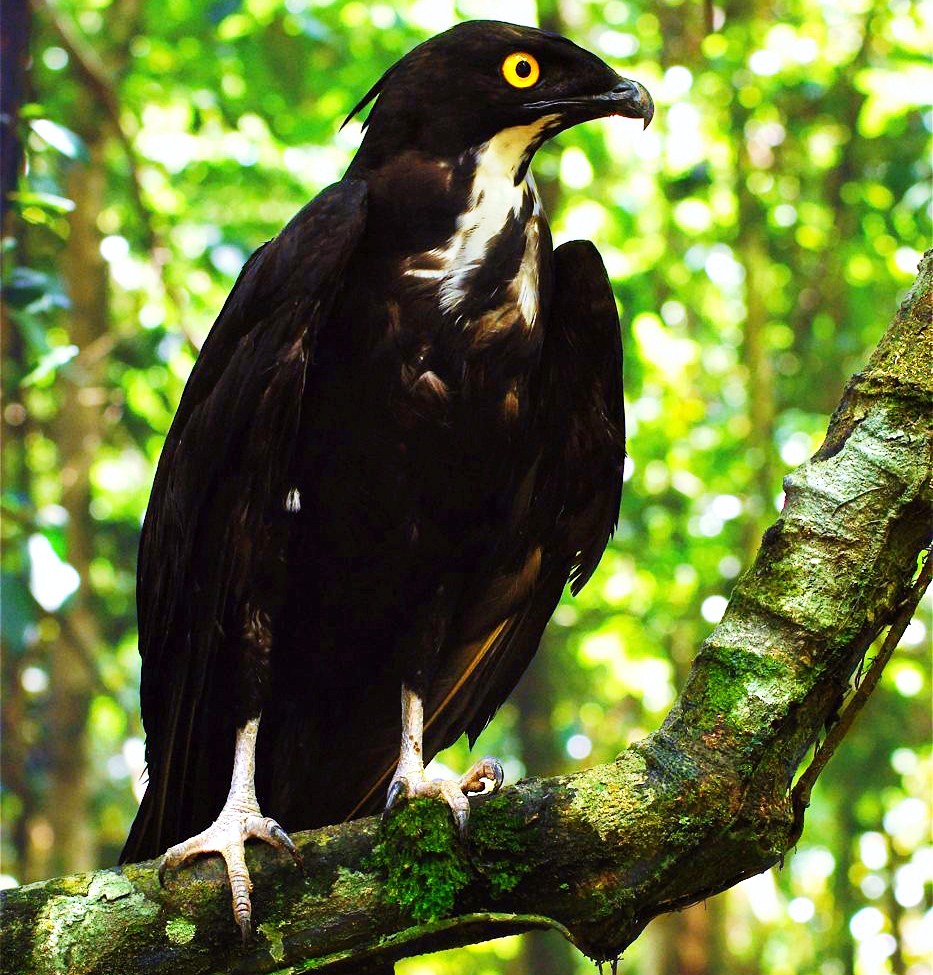Macheiramphus alcinus
 |
| Photo by Gary Albert (Wikipedia) |
Common name:
bat hawk (en); milhafre-morcegueiro (pt); milan des chauves-souris (fr); milano murcielaguero (es); fledermausaar (de)
Taxonomy:
Order Falconiformes
Family Accipitridae
Range:
This species is found throughout most of sub-Saharan Africa, from Senegal to Ethiopia and south through the D.R. Congo, Tanzania, Zambia and Angola down to South Africa. It is also found in south-east Asia, in Thailand, Malaysia, Indonesia and Papua New Guinea.
Size:
The bat hawk is 41-51 cm long and has a wingspan of 95-120 cm. They weigh 600-650 g.
Habitat:
They are found in a wide range of habitats, wherever there are large numbers of bats, from tropical forest to open areas near caves. They are even found in disturbed forests, agricultural areas and in urban parks and gardens.
Diet:
Bat hawks hunt on the wing, generally around dusk, and occasionally at dawn. They mostly eat bats, namely Miniopterus, Pipistrellus, Eptesicus, Neoromicia, Scotophilus, Nycticeius, Nycteris, Rhinolophus, Hipposideros, Eidolon and Epomophorus. They will also take insects and small birds including swallows, swiftlets, nightjars, doves, pigeons, cuckoos, starlings, waxbills, bishops and warblers.
Breeding:
These monogamous, territorial solitary nesters breed in April-January. The large stick nest is built high up in a pale-barked tree, which probably makes it easier to locate at night. There the female lays 1-2 bright green, blue or violet eggs, which she incubates alone for 51-53 days. The chicks fledge 67-70 days after hatching but only become fully independent 2-3 months later.
Conservation:
IUCN status – LC (Least Concern)
This species has an extremely large breeding range and is described as uncommon. Although there is some evidence for localized population declines caused by habitat destruction and direct persecution, its overall population appears to be stable.







